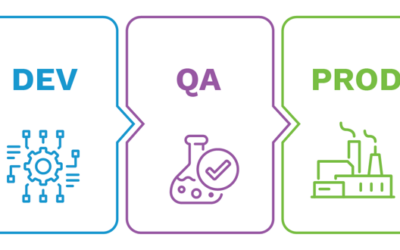How IT Pros Can be Like X-Men (Instead of Ex-pendable)
There are (at least) three reasons CIO tenures aren’t longer. Here’s how to fix them and make IT teams into business heroes.
IT leaders and their teams are often called upon to do things that are, almost, in the realm of super-heroes: protecting the company’s confidential information from malicious threats and villainous hackers; saving vital files from (inadvertent) destruction; guarding against (data) corruption; and performing amazing (technological) feats like connecting a mobile app from 2020 to a legacy enterprise management application from the 1970s.

And who wouldn’t want to think of their team as being like the X-Men (well, in the superhero sense, not the mutant part), the Justice League or the Fantastic Four—a group of individuals with complementary powers working together in pursuit of truth, justice and all that is good! Or at least in pursuit of more efficient business processes, new capabilities and happy users.
But too often, IT pros are viewed more like the Dark Knight or Hellboy–misunderstood, under-appreciated, separate. Different. Isolated.
In a CIO Insight article, Why CIO Tenures Aren’t Longer, author and executive coach Larry Bonfante notes that the average tenure of a CIO is less than five years, and contends this is due primarily to “dissatisfaction with the way IT organizations are perceived by their internal stakeholders.” Though the article focuses on the CIO role, its points apply more broadly to IT leaders and teams. (And though the article is a few years old, average CIO tenure is still less than five years.)
Bonfante details three reasons he believes IT professionals are viewed as less than heroic.
Bad Reputation
Like Hellboy—who has a serious image problem because he’s a demon originally conjured by Nazis (though he rises above this to become a good guy) —many IT teams have an undeserved negative reputation. In Bonfante’s words, there is “a general perception of IT as a business ‘disabler.’ IT is viewed in many companies as the ‘Land of No and Slow!’”
Bonfante helpfully recommends IT pros combat this perception by helping their business peers “understand the business implications of issues such as compliance and enterprise security so they see that you are trying to keep your brand safe from danger.”
And there are four more ways to fix IT’s bad reputation (such as making cost and decision processes transparent) in a previous post here.
Technology- (not Business-) Focused
Bonfante writes that CIOs and their teams are frequently viewed as technologists who spend “most of their time performing hardware and software upgrades as opposed to enabling their customers to have a more productive experience.”
A key strategy for battling this perception is to implement a self-service portal that optimizes the experience for both end users and business service owners. Make sure it gives users what they really want, which is the ability to easily get broken things fixed, and to request new things.
Another way to defeat this misguided view is by offering schedule-based services, along the lines of the Apple Genius Bar. This approach is superior to the traditional help desk or IT service queue for supporting today’s mobile and (often) remote workforce.
Not Team Players
According to Bonfante, “many CIOs have not taken the time to develop their relationships” with their executive peers or “made the effort to be viewed as team builders.” They are seen instead as focusing “on their own agenda as opposed to working on being a key part of creating a cohesive leadership team that works across all siloes.”
While a non-traditional superhero (and somewhat extreme metaphor), Hancock suffers from a similar difficulty. Though he unquestionably tries to do good, the local police are less than supportive of his methods of crime-fighting and saving innocent lives, which often involve excessive and expensive infrastructure destruction.
To defeat this nemesis, CIOs and other IT professionals need to look for opportunities to extend IT tools to other functional groups across the organization; for example, by expanding the concept of an ITIL-recommended IT service catalog into what Forrester Research terms a business service catalog (or service portal), which serves the needs of all shared services functions.
Self-Service Portals to the Rescue
In a self-service portal approach, a single web-based catalog-like interface can be used by employees to request virtually any type of business service, resource or equipment. Even more importantly from the teamwork perspective, it enables business function managers and process owners—with only modest IT assistance—to build their own service items and fulfillment workflow processes. It gets people in all of those “siloes” sharing the same tool and speaking the same language.
Business users are beset on all sides by challenges to expand capabilities and increase the efficiency of business processes. They need (almost superhuman) help from technology experts. IT professionals have the opportunity to transform themselves from workaday schmucks to heroes, not by stepping into a phone booth to change into tights and a cape, but by embracing approaches like schedule-based services, agile service delivery, and service portals.
Release your inner hero. To learn more:
- Clarify your organization’s priorities and compare your self-service portal processes and tools on a useful, consistent scale. Download the Enterprise Self-Service Portal Scorecard now.
- Schedule a 20-minute demo to see how our enterprise workflow platform transforms large companies with complex processes to help achieve digital transformation success.



